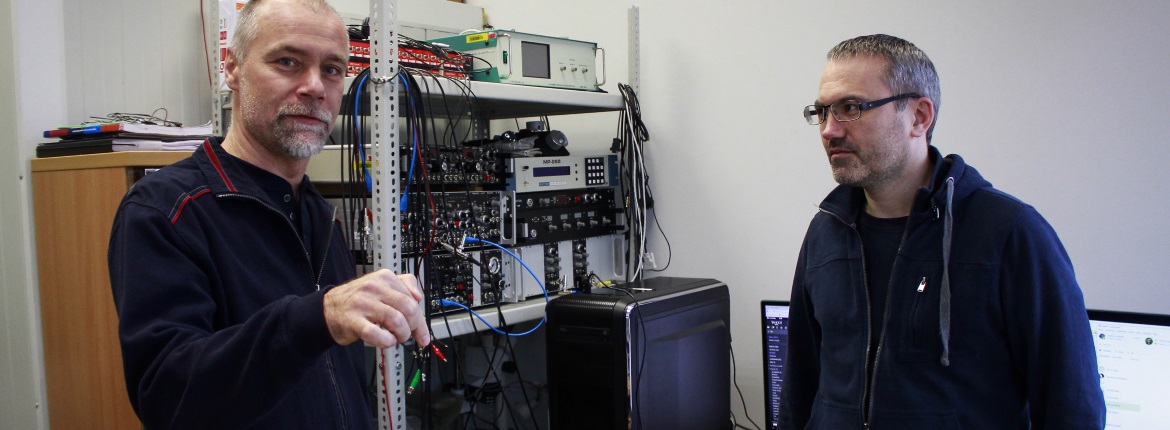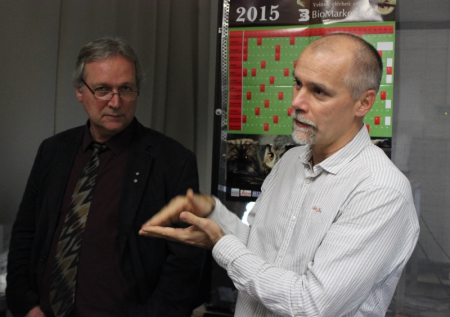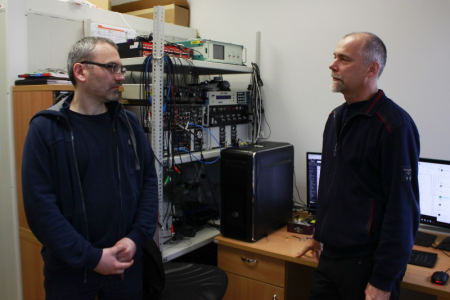
What makes the human brain?
A breakthrough has been achieved by the examination of a new type of neuron called ‘rosehip’ neuron, which has not been observed before in any kind of laboratory animals. The discovery is the result of cooperation between biologist professor Gábor Tamás and scientists of the Allen Institute for Brain Science. The single-cell based method leading to a fundamental result can be used in diagnostics.
The new type of neuron discovered by academician Gábor Tamás and his team in the Cervical Neuronal Network Research Group of the Hungarian Academy of Sciences (MTA) and the University of Szeged (SZTE) was named ‘rosehip’ nerve cell owing to its shape. ‘ ‘Rosehip’ neurons belong to the group of so-called inhibiting cells. The strategies of these cells are that they do not randomly spread their synapses, their connections to the so-called ‘pyramid cells’ and other neurons commonly found in another part of the cerebral cortex, but they select sites carefully. The specialty of the ‘rosehip’ is that it creates its relationships with other neurons with precision that we did not know was possible. For this reason, this cell has functions that are not available in other systems’ Gábor Tamás, professor of the Department of Life Sciences, Organizational and Neurosciences ‘This ‘rosehip’ has an ability which acts as if the branches in the delta of river Danube were disconnected one by one. My colleague Gábor Molnár examined how the waves flow between the ‘pyramid cells’ , from the centre of these cells to the end of dendrits, which are then quasi ‘amputated’ by the ‘rosehip neuron’ referred to the division of labour within the research group the academician who is also co-chair of the National Research Program’s Discoveries Pillar.

‘I and my colleague Eszter Boldog found some key genes a few years ago that are characteristic of these nerve cells. We were primarily interested in the function of these cells: we wanted to know what they look like and how they are built into the surrounding neural networks’ the professor of the SZTE recalled the beginnings. ‘We started to investigate the messenger RNA s of the ‘rosehip’ cells, systematically using the method developed jointly with the group of László Puskás, working for the Szeged Biological Research Centre of the Hungarian Academy of Sciences.’ The Allen Institute for Brain Science deals with the special properties of the human brain. I became member of the institute’s advisory body because - thanks to neurosurgeon Professor Pál Barzó and our collaboration with the Department of Neurosurgery - our laboratory had developed a method since the early 2000s that was later taken over by many laboratories. We taught these how tests based on human brain tissue have to be performed. As this project was progressing, several issues emerged that made the need for co-operation between them and us obvious’ the academician explained. This co-operation with the Allen Institute for Brain Science now has a formal basis: the US National Institutes of Health have decided to consider the „How many kinds of cells does the brain consist of?” problem as a central issue and provide a significant amount of support for this research. In this prominent research, only two other European laboratories can participate. The first fruit of the project on the ‘rosehip’ nerve going on for 2 years within this formalized framework is the publication issued in the Nature Neuroscience journal on August 27th, 2018.

The American Institute found that 11 human nerve cells can be found in the outermost layer of the cerebral cortex, while only 4 in that of the mouse. The common denominator between the cells of the cerebral cortex of these two creatures is just one cell type: the neuroglia form cell, which is probably a very ancient cell, which explains why it functions somewhat differently than the others - pointed out the professor of the SZTE this new context. He expects that the number of cell types that make up the brain will be between 70 and 100. Currently, about 10 cell types are distinguished in the first of the six-layers of the cortex studied by the researchers of the University of Szeged. ’What is shocking is not the fact that there is a cell that is certainly not present in the mouse, but the fact that the majority of human neurons are molecularly different from the cells of the most commonly used animal model’ emphasized Gábor Tamás. As a next step, they would like to find out whether ’rosehip’ neurons are present outside the examined parts of the cortex. The MTA-SZTE research group has also begun to study whether ‘rosehip’ neurons change in different neurological disorders, i.e. in diseases. ‘We want to know how some cell types or their networks function together in various diseases.’
Ilona Újszászi
Photo: Anna Bobkó








